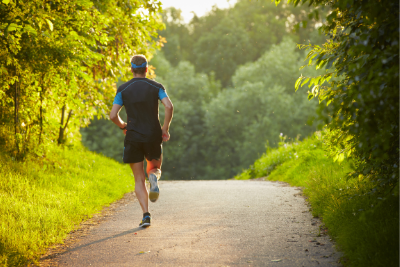Running is one of the largest and most popular sports or physical activities in Australia, with over 3 million people participating, according to AusPlay data from Sport Australia. Whether you are running to keep fit or to reach the Olympics, this is a sport that everyone can get involved in.
Is Running good for you?
Running is a great form of exercise to improve fitness, reach/maintain a healthy weight and boost your mood and well being.
Running can also reduce your risk of diseases like cardiovascular disease and osteoarthritis.


What are the risks of injury?
About 1 in every 3 recreational runners however, will develop a running-related injury at some stage in their life, and about 3 out of every 4 running-related injuries occur in the lower leg.
Common sites include the knee, ankle, shin and foot and injuries can include shin splints, patella tendonitis, and stress fractures. Runners are also likely to experience back pain and groin injuries.
With stats like that, it is clear that injury prevention should be the top goal for every runner, whether you are professional or not.
Often runners will think they don’t have time for injury prevention or don’t need it, however it is quite the opposite. Prevention is much easier than treatment! Focusing on preventing injuries will ensure you can run and keep on running.
Here are some tips on how to reduce your risk, stay healthy and stronger for longer and get faster!
5 Tips to Prevent Running Injuries
1. Warm Up –
To prevent acute or overuse injuries and improve your performance, you should warm up before starting each run. This allows your muscles, bones and joints to loosen up and increase your heart rate so your body is able to easily deal with the demands once you start. A good warm-up could include walking for 5 minutes and performing some dynamic stretches.

2. Resistance Training –
Strengthening exercises, in the form of resistance training, can greatly improve your running style and reduce risk of injuries. These should be focused on the hip and core abdominal muscles, so as to provide more stability and power when you run, while also maintaining lower limb biomechanics. Add these exercises in, on the days when you don’t run. An example of a strengthening exercise to improve hip and core abdominal strength is the Gluteal Bridge with Thera band.
3. Distance Progression –
Don’t push too hard, too soon – a very common mistake that runners can make. You need to slowly progress your distance and speed, as well as your frequency. Your body needs time to adapt to changes in training and increases in distance or intensity. Muscles and joints also need recovery time so they can handle the higher training demands because if you overload and rush that process, you could break down rather than build up. Your weekly distance can be increased by a maximum of 10%, however, even this may be too aggressive. An increase by 3% or 5% will be more realistic.
4. Recovery –
Nutritional recovery is essential after a run. Within 30-60 minutes, you should refuel your body with a nutritious meal. This time frame allows the body to rebuild and repair muscles, and restock glycogen levels and in turn reduce post-exercise soreness and risk of injury. This meal should primarily be made up of carbohydrates, with a portion of protein.

5. Review –
Pay attention and review how your body is feeling often and don’t ignore the warning signs. These signs could be a soreness in your hip, a pain in your knee, or that tightness in your shin. Ensure you take a few days rest and try some self-treatment strategies to reduce your soreness or tightness, such as foam rolling, spikey ball self-release or application of heat or ice. If your niggle won’t go away or you are unsure how to manage the pain, seek advice and treatment from your physiotherapist or health professional.
Injury Prevention Tools
You don’t need to outlay thousands of dollars, just a few inexpensive tools will do the job.
- Foam Roller – invest in a foam roller to increase flexibility, break up scar tissue, reduce myofascial adhesions and loosen up your muscles before running. Ideal to use every day.
- Thera Band – A thera-band is an exercise band that can increase the resistance and challenge of body weight exercises. Portable and very inexpensive.
- Medicine Ball – Purchase a few medicine balls in different sizes to use for your strength exercises.
- Books – Running injuries aren’t new! There are so many books and online resources out there that provide great information on training, with a focus on injury prevention.

Running Assessments and Injury Treatment at SPHC
At SPHC, we can get you running on the right track again with our Running Assessments! During the assessment we discuss your injury history, running concerns and goals, then identify key areas of concern which may need improvement.
Your 1 hr session with one of our highly trained Running Physiotherapists will include
- Video Analysis of your jogging style
- Assessment of your jogging specific muscle strength and joint flexibility
- Guidelines to help prevent injuries interrupting your training
READ MORE about our Running Assessments. Contact us on 3869 1099 or BOOK ONLINE.
For more information on common injuries and retraining your running style, please read one of our recent blogs – Retrain your Running Style to prevent Common Injuries.
Sources: Athletics Australia, Better Health Vic Govt

